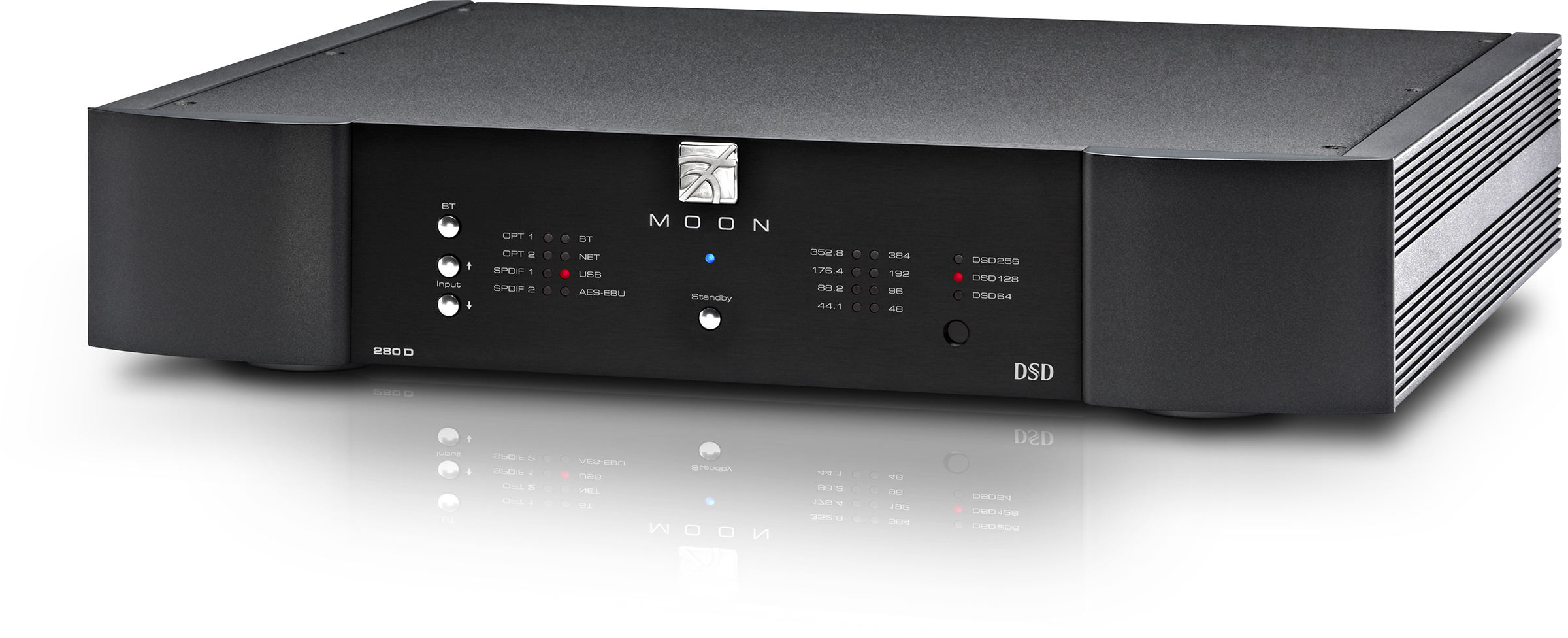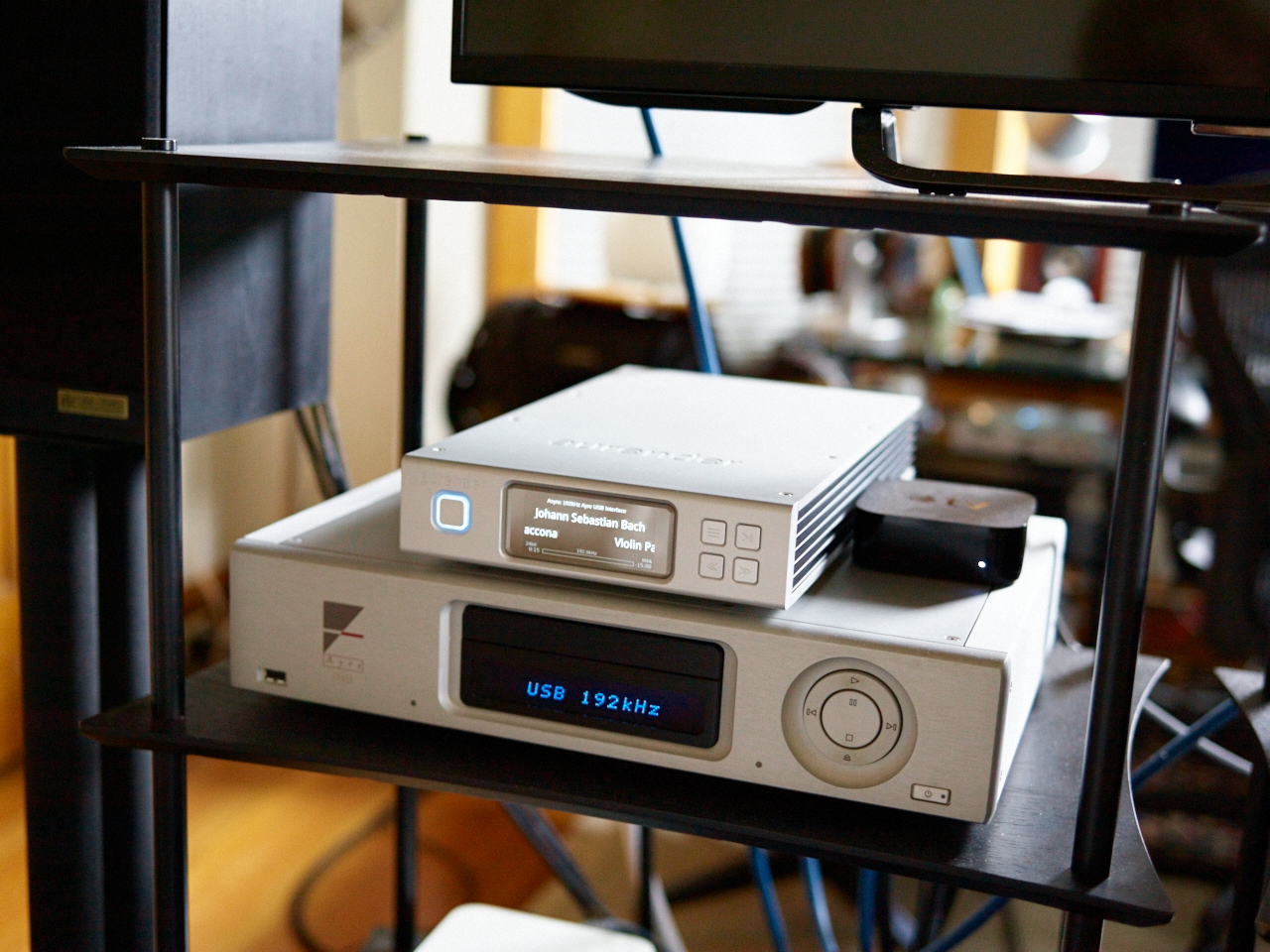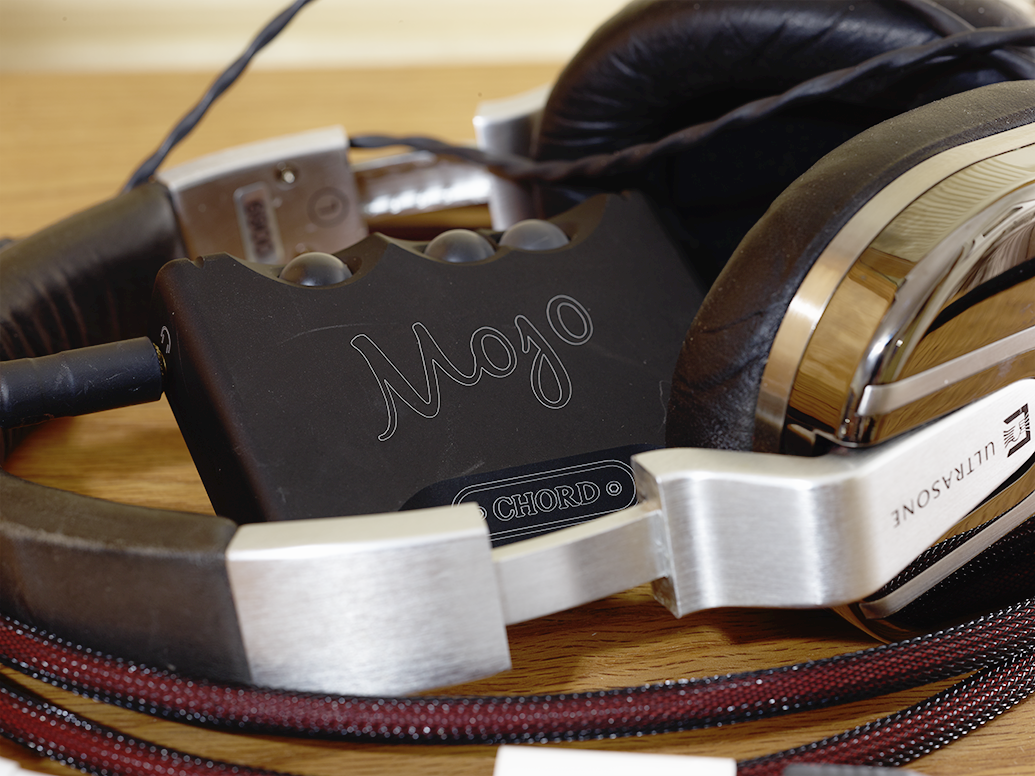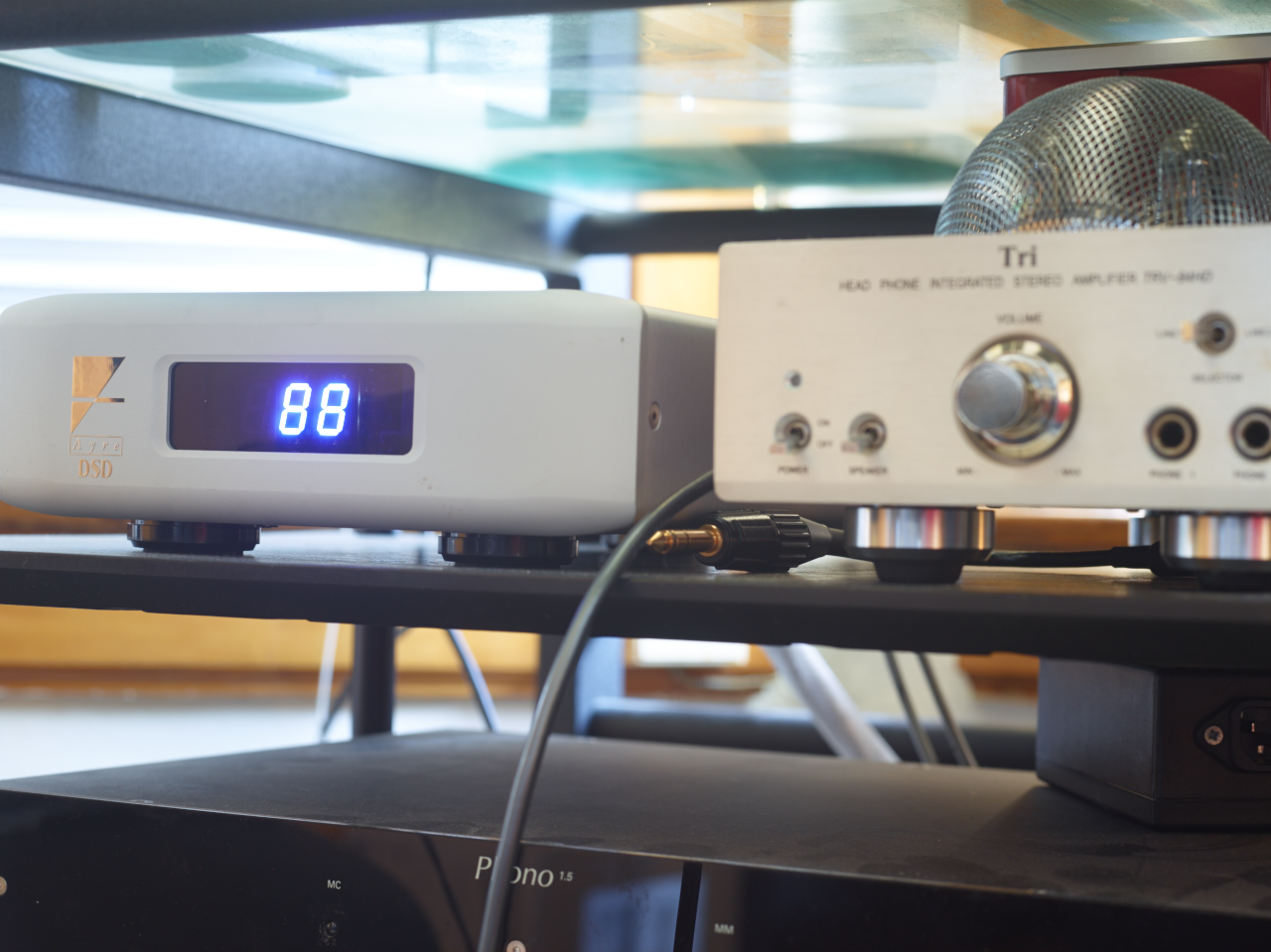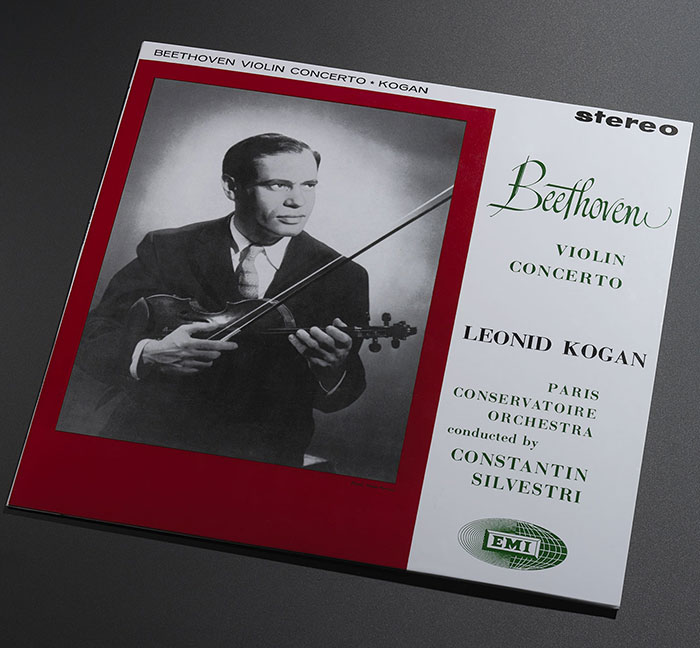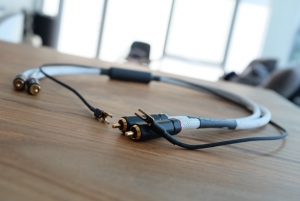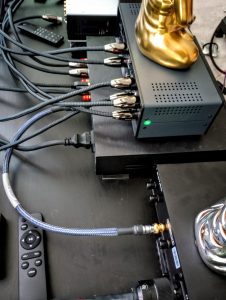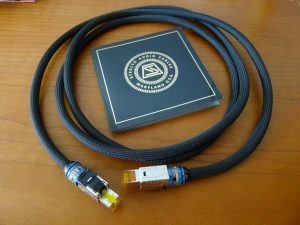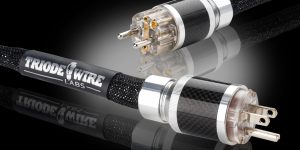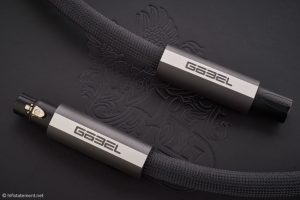"By the time I got your letter I had lost my mind
I was trippin'
‘When you gettin' better?'
It's a jagged line
Nothin' lasts forever when you travel time
I've been sippin' that cool aid of the cosmos"
—"The Voyager" by Jenny Lewis
I wrote a while back about the AudioQuest Forest Ethernet cables, the second to least expensive between the Pearl (the least expensive) and the Cinnamon (the middle of the line). Then comes the Vodka and finally the Diamond with the DBS Dielectric-Bias System. I said at the time that I had approached AudioQuest about borrowing a set of Diamonds from them to compare against my Forests but that they had never responded, which was true; however, one day I was driving my gray, 2009 Prius back up to San Francisco from work and someone called, which I answered via Bluetooth. It was Stephen Mejias, VP of Communications at AudioQuest and former Stereophile contributor very politely apologizing for getting back to me so late and offering to loan me a pair of Diamond Ethernet cables to compare to my Forests. Of course, I said I'd be delighted and gave him my shipping address immediately. Apart from a brief communication from him to tell me that the 3.0 meter cable was out of stock and asking if I would mind borrowing the 5.0 meter Diamond Ethernet cable, which I said was fine, everything went smooth as silk and less than two weeks later I had a 1.5 meter and a 5.0 meter pair of AudioQuest Diamond Ethernet cables arrive in a plain, brown box. (Inside the plain brown box, the cables were stored in their normal product packaging.)
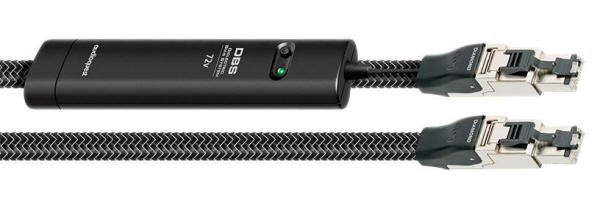
One would hope that I would immediately unpack everything and hook them up, but I was very busy at work and I also wanted to watch some streaming video with a little more scrutiny and attentiveness before I swapped out the Forests. So I would say another two weeks passed and, finally, I had an opportunity to replace the Forests with the Diamonds, putting the Forests carefully in an Ikea wicker basket that I use for holding long or spare cables by my video stand. I even bought an HD film from the iTunes Store for the first watching, specifically Guardians of the Galaxy, which I had missed in the theaters but looked like a lot of fun (I love Joss Whedon) and also full of stunning visual effects. I had expected to see a substantial difference in the image quality from the Forests, but I did not expect to be totally stunned. It was like I was watching a different medium altogether. It didn't look like film, it didn't look like a DVD or a Blu-ray disc, but it felt just as engaging as either with tremendous depth and clarity to the image as well as the ability to just draw one in. I could have been watching The Adventures of Rin Tin Tin and felt drawn in. In fact, I started going all the movies in my iTunes cloud that had anything remotely beautiful about them at all: Eat, Pray, Love; Avatar; Hellboy II: The Golden Army; The Life Aquatic with Steve Zissou (which I have on Criterion DVD, too, but not Blu-ray). They all looked great and they all had that same gripping, "draw you in" visual quality.
I finally had to watch one of my reference films, so I loaded up my HD, iCloud copy of Koyaanisqatsi that I bought from the iTunes Store several years ago. I happen to own the three-disc Criterion Collection Quatsi Trilogy on Blu-ray, which I had recently watched via my Theta Compli Blu on the same well-calibrated Sony HDTV that I use for AppleTV HD streaming with, in both cases, Transparent High Performance HDMI cables (which are stiff and purple but have luscious color rendition) and an extra beefy Equi=Tech balanced transformer, plugged right into the wall with an all Audience PowerChord "e" loom power cable system, even going into the AppleTV via an IEC adapter that I bought from Amazon. While there's no doubt that I got better objective image quality from the Blu-ray disc, I actually found the streaming content played with the aid of the AudioQuest Diamond Ethernet cables to be emotionally more engaging, so much so that it reminded me of the first time I saw Koyaanisqatsi in the mid 80's, an experience full of nothing but awe and wonder. I know that doesn't make sense because all streaming media, even your cable TV, uses lossy compression (sort of like iTunes Plus versus Apple Lossless) and, as I said, the sharpness and color saturation from the Blu-ray disc were clearly superior; however there was no doubt that with those AQ Diamond Ethernet cables in there, I got something out of watching Koyaanisqatsi that I'd only seen in all-analog before; and that stunned me.
For what it's worth, I also saw an increase in the image quality and overall watchability of Netflix and Hulu Plus content and even though I was still comparatively disappointed by Amazon Prime TV, it got much better than it had been with the Forests which in turns were light years ahead of my blue Belkin CAT5e patch cables (no offense to Belkin intended). I have very fast download speeds (over 50Mbps), so I can get pretty much the smallest amount of lossy compression offered by adaptive streaming, where the content provider adjusts the image quality based on the speed of your Internet connection to minimize pauses and buffering, at the cost of having additional digital artifacts. Now lets talk about sound. I don't have a home theater system; in fact, unless I'm wearing headphones by connecting the analog output of my HDTV via a long, thin cable to the AUX in of my iBasso D12, driving a pair of HiFiMan HE-5LE's (which sound OK under the circumstances), I just use my Sony's built in speakers. Someday I'll get my video system connected again to a proper pair of speakers, this time with an AV processor or receiver; but in order to evaluate sound, I had to turn to my Magnum Dynalab MD 807T Internet tuner with its proprietary processing algorithms, upscaling 24/192 DAC, and true triode analog output stage, just to add a touch of warmth. I think the MD 807T sounds wonderful regardless of the signal origin and I listen to stations from all over the world as well as the local fare; but with the AudioQuest Diamond Ethernet cables in the pathway, the sound quality took a quantum leap up.
When I first listened to KQED, a San Francisco-based NPR station, and to the Linn Jazz channel, which has a little more bandwidth and resolution than average, I initially thought I heard a bit of a treble reduction in comparison to the Forests; however, I soon realized that what I was hearing with the Diamonds was truer to what was in the stream. The Forests, while excellent themselves, still let just enough in the way of digital artifacts through to give the sound an apparently slightly brighter and more open quality, whereas the Diamonds eliminated almost all of that and allowed a smoother, more natural sound to come through, although it did point out some of the limitations of Internet radio even using the Magnum Dynalab. The other things I heard with the Diamonds, though, included a greater richness to the sound and more bass definition, not a boomier sound, just more layers. I also found myself, as with video, more emotionally engaged in the sound particularly with the Linn Jazz channel, which enveloped me and reminded me more of listening to a well recorded CD or LP than to an Internet radio stream. Listening to BBC Radio 3, one of my favorite classical radio stations, I felt really amazed because I was hearing a transmission from ½ way around the world as if it was a local FM broadcast, only there's no spattering and the temporary breakups that you get with terrestrial FM (if an FM signal could actually go across an ocean) and, with the AudioQuest Diamond Ethernet cables, the sound was silky smooth with no harshness or digital artifacts, just very involving music. Put simply, the sound was no longer "flat" but had dimension and life compared to using an ordinary Ethernet patch cable or even compared to the AQ Forests, which themselves were still much better than, again, my regular blue Belkin CAT5e's.
I only had one thing left to test, which was the performance of my home audio system when NOT using streaming media but WITH the AudioQuest Diamond Ethernet cables installed where necessary. My experience with the Forests had been that just plugging them in and using them in place of CAT5e patch cables improved the sound of my CD player even when just playing Ahmad Jamal's Blue Moon without performing any steaming whatsoever. I admitted that even I had questions about whether I was a subject of the placebo effect but, after much listening, I came to the conclusion that the Forests did make an improvement in the sound my home audio system (at least my Triode Audio Corporation TRV-CD4SE upsampling, one-tube CD player) while not doing any audio or video related streaming at all. So the questions were (a) would I hear the same thing with the Diamonds and (b) would it be even more pronounced? Well, I found my copy of Blue Moon as well as my copy of Luciana Souza's The New Bossa Nova, one of my all-time favorite reference discs, and queued them up one after the other. With Blue Moon, I could hear everything I had heard with the Forests (more overall clarity, greater richness, more depth and dynamic range as well as more, better bass), but I also heard a more extended top end and greater upper midrange and treble clarity without sounding bright in a circa 1997 Spectral and Wilson-like way.
The same things were true with The New Bossa Nova (which I had not tried with the Forests connected to my Apple Airport Extreme and Sony HDTV), but, oddly, having the Diamonds installed in the same places seemed to push the performance envelope of my little, home-office based system to the point where it actually started to show off the limitations of the Luciana Souza disc. Specifically, I could hear, in addition to greater overall clarity, the limits of the recording itself, at least through my Micropure mini-monitors and Essex 12" subwoofer driven by my Tri TRV-88SE KT88 push-pull integrated / power amplifier with the AudioQuest Diamond Ethernet cables installed in another system in another part of my apartment. I decided to use my Fostex TH-900 headphones with my Tri TRV-84HD 6BQ5 single ended stereo headphone / integrated amplifier just as a point of comparison, a reality check of sorts. While I did hear greater richness and warmth as well as overall more detail and "force" behind the performance, I did not feel like I was pushing the envelope so much. So perhaps the mini-monitors have inherently more resolving power than the headphones, which was unleashed or at least made more obvious by the AQ Diamonds.
I suppose that's really all I have to say. Obviously I am delighted with the AudioQuest Diamond Ethernet cables in every way, so much so that I am hesitant to go back to my Forests (although they are still so much better than a regular Ethernet patch cable). So tell AudioQuest that I sent you and allow me to offer my thanks to Stephen Mejias for calling me in response to my original email.
Kindest regards,
Andy
http://www.audioquest.com/ethernet/diamond




